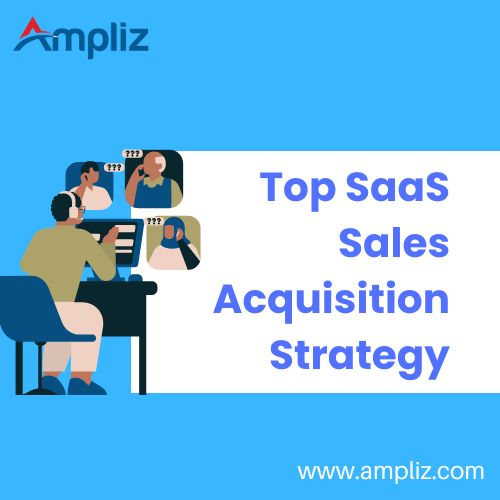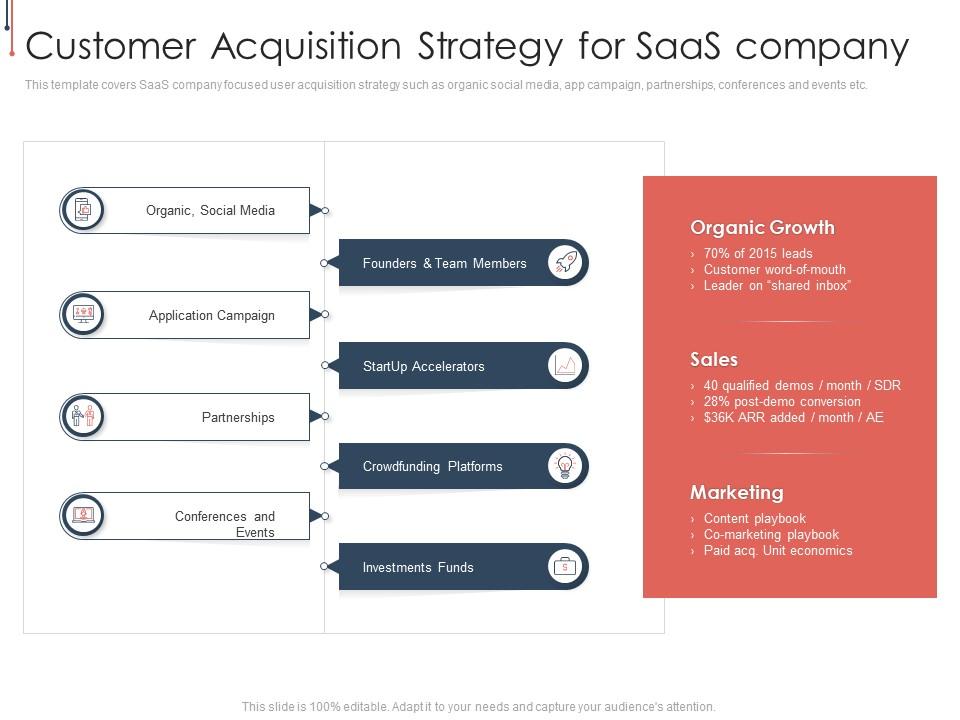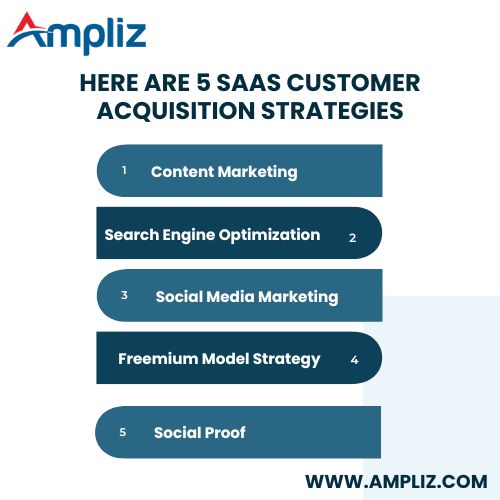Why Customer Acquisition is Key to SaaS Success
Customer acquisition is the lifeblood of any SaaS business. Without a steady stream of new customers, even the most innovative and well-designed software solutions will struggle to achieve long-term success. Effective SaaS customer acquisition strategies are crucial for driving revenue growth, increasing customer lifetime value, and reducing churn rates.
In the competitive world of SaaS, customer acquisition is a constant challenge. With new software solutions emerging every day, it’s becoming increasingly difficult for businesses to stand out and attract new customers. However, by understanding the importance of customer acquisition and implementing proven strategies, SaaS businesses can gain a competitive edge and achieve sustainable growth.
One of the key reasons why customer acquisition is so critical for SaaS businesses is that it has a direct impact on revenue growth. By acquiring new customers, SaaS businesses can increase their revenue streams and drive business growth. Additionally, customer acquisition also plays a critical role in reducing churn rates. By acquiring high-quality customers who are a good fit for the software solution, SaaS businesses can reduce the risk of churn and increase customer lifetime value.
Furthermore, effective SaaS customer acquisition strategies can also help businesses to stay ahead of the competition. By leveraging innovative marketing tactics and staying up-to-date with the latest industry trends, SaaS businesses can differentiate themselves from their competitors and attract new customers. This, in turn, can help to drive business growth and increase market share.
In order to develop effective SaaS customer acquisition strategies, businesses need to have a deep understanding of their target audience. This includes understanding their pain points, goals, and behaviors, as well as their preferred communication channels and marketing tactics. By gaining a deeper understanding of their target audience, SaaS businesses can develop targeted marketing campaigns that resonate with their ideal customer and drive conversions.
By prioritizing customer acquisition and implementing proven strategies, SaaS businesses can drive revenue growth, increase customer lifetime value, and reduce churn rates. In the next section, we’ll explore the importance of understanding your ideal customer and how to create buyer personas that inform your SaaS customer acquisition strategies.
Understanding Your Ideal Customer: The Foundation of Successful Acquisition
To develop effective SaaS customer acquisition strategies, it’s essential to have a deep understanding of your target audience. This includes understanding their pain points, goals, and behaviors, as well as their preferred communication channels and marketing tactics. By gaining a deeper understanding of your ideal customer, you can create targeted marketing campaigns that resonate with them and drive conversions.
One of the most effective ways to understand your ideal customer is to create buyer personas. A buyer persona is a semi-fictional representation of your ideal customer, based on market research and data analysis. By creating buyer personas, you can gain a deeper understanding of your target audience’s needs, preferences, and behaviors, and develop marketing campaigns that speak directly to them.
To create buyer personas, start by gathering data on your existing customers and prospects. This can include demographic information, such as age, job title, and industry, as well as behavioral data, such as purchase history and website interactions. Use this data to identify patterns and trends, and create personas that reflect your ideal customer’s characteristics.
Once you have created your buyer personas, use them to inform your SaaS customer acquisition strategies. This can include developing targeted marketing campaigns, creating content that resonates with your ideal customer, and optimizing your website and sales funnel to meet their needs. By understanding your ideal customer and developing strategies that speak directly to them, you can increase conversions, reduce churn, and drive revenue growth.
In addition to creating buyer personas, it’s also essential to map the customer journey. The customer journey is the series of interactions that a customer has with your brand, from initial awareness to conversion and beyond. By mapping the customer journey, you can identify pain points and opportunities for improvement, and develop strategies that meet your ideal customer’s needs at every stage.
By understanding your ideal customer and mapping the customer journey, you can develop SaaS customer acquisition strategies that drive real results. In the next section, we’ll explore the role of content marketing in SaaS customer acquisition, and provide tips on how to create high-quality, relevant content that resonates with your target audience.
How to Leverage Content Marketing for SaaS Customer Acquisition
Content marketing is a powerful tool for SaaS customer acquisition, allowing businesses to attract, engage, and convert their target audience. By creating high-quality, relevant content, SaaS businesses can establish thought leadership, build trust, and drive conversions. In this section, we’ll explore the role of content marketing in SaaS customer acquisition and provide tips on how to create effective content marketing campaigns.
One of the most effective types of content for SaaS customer acquisition is blog posts. Blog posts provide a platform for SaaS businesses to share their expertise, showcase their products, and address the pain points of their target audience. By creating informative, engaging, and optimized blog posts, SaaS businesses can attract organic traffic, build backlinks, and drive conversions.
In addition to blog posts, eBooks, webinars, and case studies are also effective types of content for SaaS customer acquisition. eBooks provide a comprehensive guide to a specific topic, while webinars offer a live, interactive experience. Case studies, on the other hand, provide real-life examples of how a SaaS product has solved a specific problem. By creating these types of content, SaaS businesses can establish thought leadership, build trust, and drive conversions.
To create effective content marketing campaigns, SaaS businesses should focus on creating high-quality, relevant content that resonates with their target audience. This includes understanding their pain points, goals, and behaviors, as well as their preferred communication channels and marketing tactics. By creating content that speaks directly to their target audience, SaaS businesses can increase engagement, build trust, and drive conversions.
Another key aspect of content marketing for SaaS customer acquisition is optimization. By optimizing content for search engines, SaaS businesses can increase their visibility, drive organic traffic, and attract new customers. This includes using relevant keywords, meta descriptions, and optimizing images. By optimizing their content, SaaS businesses can increase their online presence and drive more conversions.
Finally, SaaS businesses should measure the effectiveness of their content marketing campaigns and make data-driven decisions to optimize their strategy. This includes tracking metrics such as website traffic, engagement, and conversions. By measuring the effectiveness of their content marketing campaigns, SaaS businesses can identify areas for improvement, optimize their strategy, and drive more conversions.
The Power of Paid Advertising: Maximizing ROI for SaaS Customer Acquisition
Paid advertising is a powerful tool for SaaS customer acquisition, allowing businesses to reach a large audience and drive conversions. However, with so many paid advertising channels available, it can be difficult to know where to start. In this section, we’ll explore the benefits and challenges of using paid advertising channels like Google Ads, Facebook Ads, and LinkedIn Ads for SaaS customer acquisition, and provide guidance on how to optimize ad campaigns for maximum ROI.
Google Ads is one of the most popular paid advertising channels for SaaS customer acquisition. With Google Ads, businesses can create targeted ads that appear at the top of search engine results pages (SERPs) and drive traffic to their website. To optimize Google Ads campaigns for maximum ROI, businesses should focus on creating high-quality ad copy, using relevant keywords, and setting up conversion tracking.
Facebook Ads is another popular paid advertising channel for SaaS customer acquisition. With Facebook Ads, businesses can create targeted ads that appear in users’ newsfeeds and drive traffic to their website. To optimize Facebook Ads campaigns for maximum ROI, businesses should focus on creating high-quality ad creative, using relevant targeting options, and setting up conversion tracking.
LinkedIn Ads is a powerful paid advertising channel for SaaS customer acquisition, particularly for B2B businesses. With LinkedIn Ads, businesses can create targeted ads that appear in users’ newsfeeds and drive traffic to their website. To optimize LinkedIn Ads campaigns for maximum ROI, businesses should focus on creating high-quality ad creative, using relevant targeting options, and setting up conversion tracking.
To maximize ROI from paid advertising campaigns, businesses should focus on creating high-quality ad copy, using relevant targeting options, and setting up conversion tracking. This includes tracking metrics such as cost per click (CPC), cost per conversion (CPA), and return on ad spend (ROAS). By tracking these metrics, businesses can identify areas for improvement and optimize their ad campaigns for maximum ROI.
In addition to creating high-quality ad copy and using relevant targeting options, businesses should also focus on optimizing their landing pages for maximum conversions. This includes creating clear and concise headlines, using relevant images, and including a clear call-to-action (CTA). By optimizing landing pages, businesses can increase conversions and maximize ROI from paid advertising campaigns.
Finally, businesses should continuously monitor and optimize their paid advertising campaigns to ensure maximum ROI. This includes tracking metrics, identifying areas for improvement, and making data-driven decisions to optimize ad campaigns. By continuously monitoring and optimizing paid advertising campaigns, businesses can maximize ROI and drive more conversions.
Building Relationships through Email Marketing and Nurture Campaigns
Email marketing and nurture campaigns are essential components of SaaS customer acquisition strategies. By building relationships with potential customers through targeted email campaigns, businesses can establish trust, demonstrate thought leadership, and encourage conversions. In this section, we’ll explore the importance of email marketing and nurture campaigns in SaaS customer acquisition and provide guidance on how to create effective campaigns.
Email marketing is a powerful tool for SaaS customer acquisition, allowing businesses to reach a large audience and drive conversions. To create effective email marketing campaigns, businesses should focus on creating high-quality content, using relevant subject lines, and segmenting their email list. By segmenting their email list, businesses can target specific groups of potential customers with tailored content and increase the effectiveness of their campaigns.
Nurture campaigns are a type of email marketing campaign that focuses on building relationships with potential customers over time. By creating a series of targeted emails that provide value and educate potential customers, businesses can establish trust and demonstrate thought leadership. To create effective nurture campaigns, businesses should focus on creating high-quality content, using relevant subject lines, and segmenting their email list.
One of the key benefits of email marketing and nurture campaigns is that they allow businesses to build relationships with potential customers over time. By providing value and educating potential customers, businesses can establish trust and demonstrate thought leadership. This can lead to increased conversions and revenue growth.
To create effective email marketing and nurture campaigns, businesses should focus on creating high-quality content, using relevant subject lines, and segmenting their email list. By doing so, businesses can increase the effectiveness of their campaigns and drive more conversions.
In addition to creating high-quality content and segmenting their email list, businesses should also focus on optimizing their email campaigns for maximum ROI. This includes tracking metrics such as open rates, click-through rates, and conversion rates. By tracking these metrics, businesses can identify areas for improvement and optimize their email campaigns for maximum ROI.
Finally, businesses should continuously monitor and optimize their email marketing and nurture campaigns to ensure maximum ROI. This includes tracking metrics, identifying areas for improvement, and making data-driven decisions to optimize campaigns. By continuously monitoring and optimizing their email marketing and nurture campaigns, businesses can maximize ROI and drive more conversions.
Leveraging Customer Advocacy and Referrals for SaaS Growth
Customer advocacy and referrals are powerful tools for SaaS customer acquisition, allowing businesses to tap into the networks of their existing customers and drive word-of-mouth marketing. By incentivizing happy customers to become brand ambassadors, businesses can increase brand awareness, build trust, and drive conversions. In this section, we’ll explore the value of customer advocacy and referrals in SaaS customer acquisition and provide guidance on how to leverage these strategies for growth.
Customer advocacy is a powerful form of social proof, allowing businesses to showcase the success of their existing customers and build trust with potential customers. By incentivizing happy customers to share their experiences with others, businesses can create a network of brand ambassadors who can drive word-of-mouth marketing and referrals. To leverage customer advocacy, businesses should focus on creating a customer advocacy program that rewards and recognizes happy customers for their loyalty and advocacy.
Referrals are another powerful tool for SaaS customer acquisition, allowing businesses to tap into the networks of their existing customers and drive conversions. By incentivizing happy customers to refer their friends and colleagues, businesses can increase brand awareness, build trust, and drive conversions. To leverage referrals, businesses should focus on creating a referral program that rewards and recognizes happy customers for their referrals.
One of the key benefits of customer advocacy and referrals is that they allow businesses to tap into the networks of their existing customers and drive word-of-mouth marketing. By incentivizing happy customers to share their experiences with others, businesses can create a network of brand ambassadors who can drive conversions and growth. To leverage customer advocacy and referrals, businesses should focus on creating a customer advocacy program and referral program that rewards and recognizes happy customers for their loyalty and advocacy.
To create effective customer advocacy and referral programs, businesses should focus on creating a clear and compelling value proposition that resonates with their target audience. This includes highlighting the benefits of their product or service, showcasing the success of their existing customers, and providing incentives for happy customers to share their experiences with others. By creating a clear and compelling value proposition, businesses can increase brand awareness, build trust, and drive conversions.
In addition to creating a clear and compelling value proposition, businesses should also focus on providing exceptional customer service and support. This includes responding to customer inquiries in a timely and professional manner, providing ongoing training and support, and offering incentives for happy customers to share their experiences with others. By providing exceptional customer service and support, businesses can increase customer satisfaction, build trust, and drive conversions.
Finally, businesses should continuously monitor and optimize their customer advocacy and referral programs to ensure maximum ROI. This includes tracking metrics such as customer satisfaction, referral rates, and conversion rates. By tracking these metrics, businesses can identify areas for improvement and optimize their customer advocacy and referral programs for maximum ROI.
Measuring and Optimizing SaaS Customer Acquisition Strategies
To ensure the success of SaaS customer acquisition strategies, it is crucial to track key metrics and use data to inform optimization efforts. By monitoring customer acquisition cost (CAC), customer lifetime value (CLV), and churn rate, businesses can gain valuable insights into the effectiveness of their acquisition strategies and make data-driven decisions to improve return on investment (ROI).
Customer acquisition cost (CAC) is a critical metric that measures the cost of acquiring a new customer, including sales, marketing, and support expenses. By tracking CAC, businesses can identify areas for cost reduction and optimize their acquisition strategies to achieve a lower CAC. For example, a SaaS company may find that its CAC is higher than expected due to inefficient sales processes. By streamlining its sales process and implementing more effective sales strategies, the company can reduce its CAC and improve its ROI.
Customer lifetime value (CLV) is another essential metric that measures the total value of a customer over their lifetime. By tracking CLV, businesses can identify opportunities to increase revenue and improve customer retention. For instance, a SaaS company may find that its CLV is lower than expected due to high churn rates. By implementing effective customer retention strategies, such as regular communication and support, the company can increase its CLV and improve its ROI.
Churn rate is a critical metric that measures the percentage of customers who cancel their subscriptions over a given period. By tracking churn rate, businesses can identify areas for improvement and optimize their customer retention strategies. For example, a SaaS company may find that its churn rate is higher than expected due to poor customer support. By implementing more effective customer support strategies, such as 24/7 support and regular check-ins, the company can reduce its churn rate and improve its ROI.
To optimize SaaS customer acquisition strategies, businesses can use data to inform their decision-making. For instance, a SaaS company may use data to identify the most effective marketing channels, such as social media or content marketing, and allocate its budget accordingly. By using data to inform its acquisition strategies, the company can improve its ROI and achieve its growth goals.
In addition to tracking key metrics, businesses can use analytics tools to gain deeper insights into their customer acquisition strategies. For example, a SaaS company may use analytics tools to track website traffic, conversion rates, and customer behavior. By using analytics tools, the company can identify areas for improvement and optimize its acquisition strategies to achieve better results.
In conclusion, measuring and optimizing SaaS customer acquisition strategies is critical to achieving growth and success. By tracking key metrics, such as CAC, CLV, and churn rate, and using data to inform decision-making, businesses can improve their ROI and achieve their growth goals. By leveraging analytics tools and optimizing their acquisition strategies, SaaS companies can stay ahead of the competition and achieve long-term success.
Staying Ahead of the Competition: Emerging Trends in SaaS Customer Acquisition
The SaaS customer acquisition landscape is constantly evolving, with new trends and innovations emerging every year. To stay ahead of the competition, SaaS businesses must be aware of these emerging trends and adapt their customer acquisition strategies accordingly. In this article, we will explore some of the most significant emerging trends in SaaS customer acquisition, including the use of AI, machine learning, and account-based marketing.
Artificial Intelligence (AI) is one of the most significant emerging trends in SaaS customer acquisition. AI-powered tools can help SaaS businesses automate and optimize their customer acquisition processes, from lead generation to conversion. For example, AI-powered chatbots can be used to engage with potential customers, answer their questions, and provide personalized support. AI-powered predictive analytics can also be used to identify high-quality leads and predict their likelihood of conversion.
Machine Learning (ML) is another emerging trend in SaaS customer acquisition. ML algorithms can be used to analyze large datasets and identify patterns and trends that can inform customer acquisition strategies. For example, ML algorithms can be used to analyze customer behavior and identify the most effective marketing channels and tactics. ML algorithms can also be used to personalize the customer experience and improve conversion rates.
Account-Based Marketing (ABM) is a emerging trend in SaaS customer acquisition that involves targeting specific accounts and decision-makers with personalized content and messaging. ABM can be used to build relationships with key decision-makers and influencers, and to create personalized experiences that resonate with their needs and interests. For example, SaaS businesses can use ABM to create personalized email campaigns, social media campaigns, and content marketing campaigns that target specific accounts and decision-makers.
Personalization is another emerging trend in SaaS customer acquisition. Personalization involves tailoring the customer experience to the individual needs and preferences of each customer. For example, SaaS businesses can use personalization to create personalized product recommendations, personalized content recommendations, and personalized support experiences. Personalization can help SaaS businesses build trust and loyalty with their customers, and improve conversion rates and customer retention.
Data-Driven Decision Making is an emerging trend in SaaS customer acquisition that involves using data and analytics to inform customer acquisition strategies. For example, SaaS businesses can use data and analytics to track key metrics such as customer acquisition cost, customer lifetime value, and churn rate. Data and analytics can also be used to identify areas for improvement and optimize customer acquisition strategies for maximum ROI.
In conclusion, emerging trends such as AI, machine learning, account-based marketing, personalization, and data-driven decision making are transforming the SaaS customer acquisition landscape. By staying ahead of these trends and adapting their customer acquisition strategies accordingly, SaaS businesses can improve their ROI, build trust and loyalty with their customers, and achieve long-term success.
To stay ahead of the competition, SaaS businesses must be willing to experiment and innovate with new customer acquisition strategies and tactics. This may involve investing in new technologies and tools, such as AI-powered chatbots and ML algorithms, and developing new skills and expertise, such as data science and analytics. By embracing these emerging trends and adapting their customer acquisition strategies accordingly, SaaS businesses can stay ahead of the competition and achieve long-term success.








